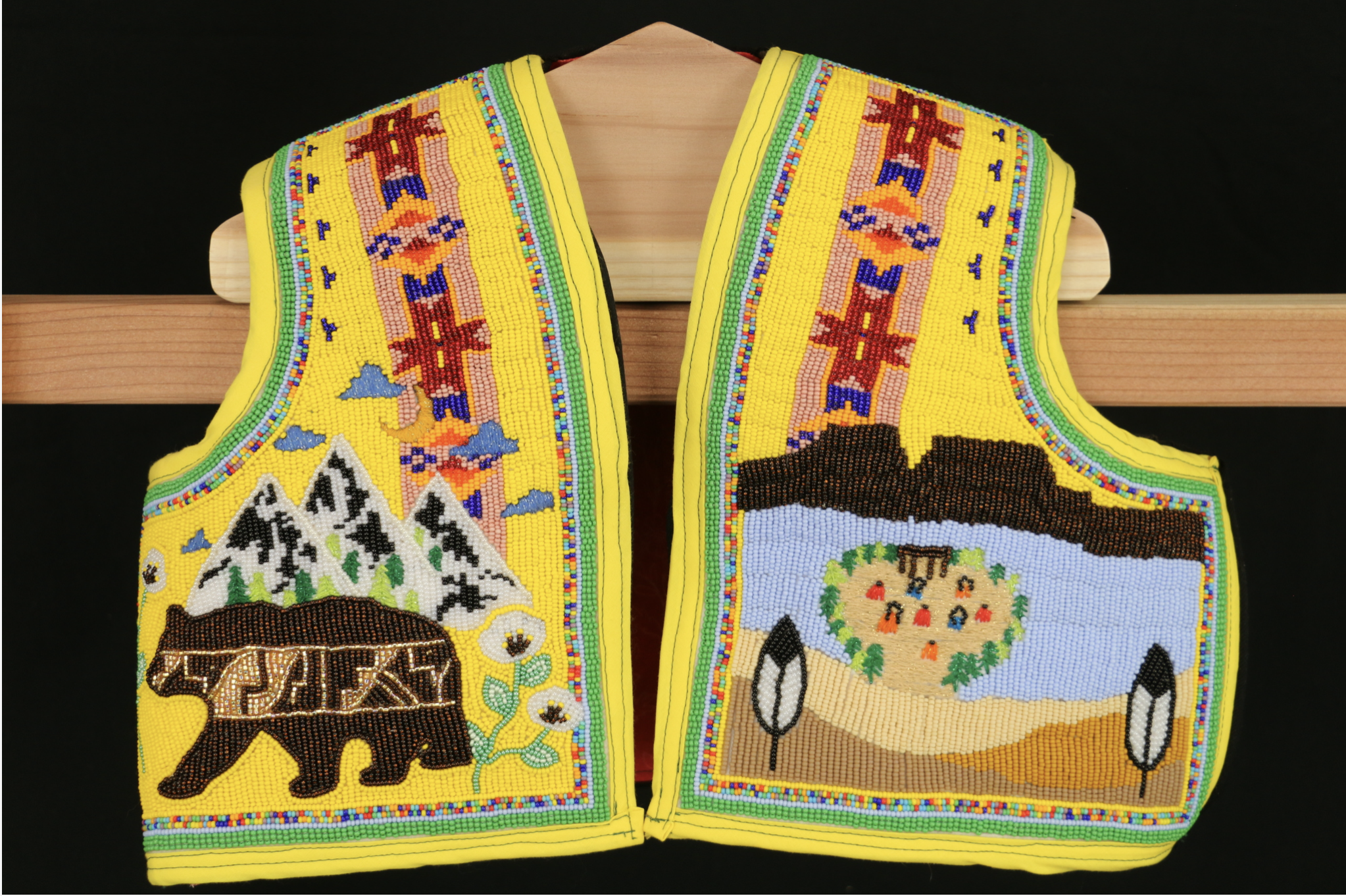
- Details
- By Native News Online Staff
On Saturday, March 23, 2024, the Ute Mountain Ute Tribe is unveiling its "100 Years of Silence" project in a free, public launch at The Leonardo Museum in Salt Lake City. The exhibition seeks to demonstrate the resilience on the 101st anniversary of the “Posey War,” which began on March 19, 1923.
Ute elders, storytellers, artists, and musicians will weave narratives to showcase the indomitable spirit of the Ute Mountain Ute people over the last century. Saturday's program is free and open to the public.The exhibit will be opened on March 23 at 10 a.m. with a public launch for the 100 Years of Silence project from 1 p.m. to 4 p.m.
An open house will follow until 6 p.m. Registration is free and open to all as space permits.
The attack that began on March 19, 1923 led to the weeks-long, forcible internment of around 80 Ute women, children, and men in a barbed wire cage in the streets of Blanding; the murder of two Ute men; the loss of access to traditional Ute land in the Bears Ears area; and the coerced enrollment of Ute children in boarding schools.
Never before has the Ute community come together — through history, art, and storytelling — to tell their version of the tragic events that unfolded in March and April of 1923. The 100 Years of Silence project seeks to promote healing by sharing the Ute perspective on the incident, and to showcase their legacy of endurance.
The Leonardo Museum will host an exhibit of seven artists from the Ute Mountain Ute community of White Mesa, who were chosen to make art related to what happened 101 years ago, speaking to memory and hope for the future.
“Let us mark this occasion together,” said Shaun Ketchum, project director for the 100 Years of Silence and a descendant of Posey. “We will end a century of silence with compassion, empathy, and unity.”
“Our Elders told me since I was a young man, you never forget about our land. The Ute Way. That means the land and the water, you don’t ever forget about it. It’s what we fought for,” said Malcolm Lehi, councilman for the Ute Mountain Ute Tribe and member of the Bears Ears Inter-Tribal Coalition.
“Stories are behind each piece I beaded,” said Toni Pelt, a Ute Mountain Ute artist whose beadwork will be displayed at the Leonardo exhibit. “The hummingbirds represent healing. I feel like in my story, my artwork, I wanted to bring out the healing part. I didn’t want to stay in the past. I wanted to bring our healing to now.”
REGISTER HERE to attend the event.
This event will also be livestreamed on Facebook at: https://www.facebook.com/utahdinebikeyah/live_videos/
More Stories Like This
Cherokee Nation Showcases Growing Film Slate with Fall Premieres of Incentive-Supported TitlesChickasaw Artists Represent at Southwestern Association for Indian Arts in Santa Fe
Zuni Partners Share Community-Led Delapna:we Project at ATALM 2025 Conference
Celebrating 50 Years: The Rockwell Museum Looks to the Future with "Native Now"
AMC Announces Return of Dark Winds for Season 4, Premiering February 15
Help us tell the stories that could save Native languages and food traditions
At a critical moment for Indian Country, Native News Online is embarking on our most ambitious reporting project yet: "Cultivating Culture," a three-year investigation into two forces shaping Native community survival—food sovereignty and language revitalization.
The devastating impact of COVID-19 accelerated the loss of Native elders and with them, irreplaceable cultural knowledge. Yet across tribal communities, innovative leaders are fighting back, reclaiming traditional food systems and breathing new life into Native languages. These aren't just cultural preservation efforts—they're powerful pathways to community health, healing, and resilience.
Our dedicated reporting team will spend three years documenting these stories through on-the-ground reporting in 18 tribal communities, producing over 200 in-depth stories, 18 podcast episodes, and multimedia content that amplifies Indigenous voices. We'll show policymakers, funders, and allies how cultural restoration directly impacts physical and mental wellness while celebrating successful models of sovereignty and self-determination.
This isn't corporate media parachuting into Indian Country for a quick story. This is sustained, relationship-based journalism by Native reporters who understand these communities. It's "Warrior Journalism"—fearless reporting that serves the 5.5 million readers who depend on us for news that mainstream media often ignores.
We need your help right now. While we've secured partial funding, we're still $450,000 short of our three-year budget. Our immediate goal is $25,000 this month to keep this critical work moving forward—funding reporter salaries, travel to remote communities, photography, and the deep reporting these stories deserve.
Every dollar directly supports Indigenous journalists telling Indigenous stories. Whether it's $5 or $50, your contribution ensures these vital narratives of resilience, innovation, and hope don't disappear into silence.
 The stakes couldn't be higher. Native languages are being lost at an alarming rate. Food insecurity plagues many tribal communities. But solutions are emerging, and these stories need to be told.
The stakes couldn't be higher. Native languages are being lost at an alarming rate. Food insecurity plagues many tribal communities. But solutions are emerging, and these stories need to be told.
Support independent Native journalism. Fund the stories that matter.
Levi Rickert (Potawatomi), Editor & Publisher

